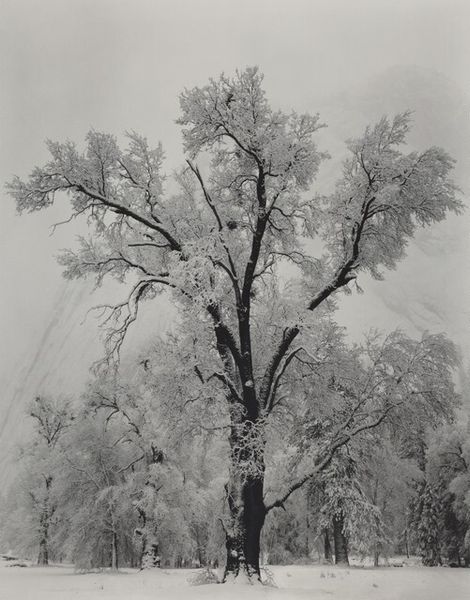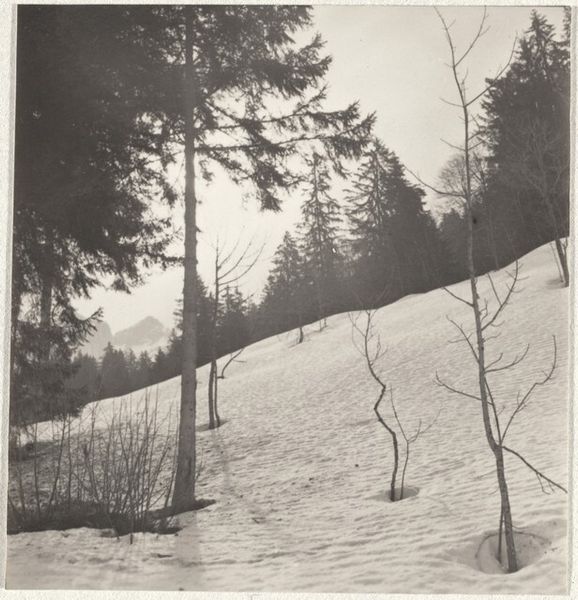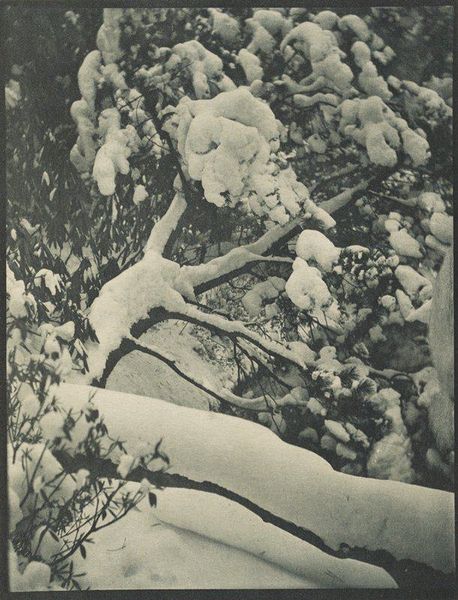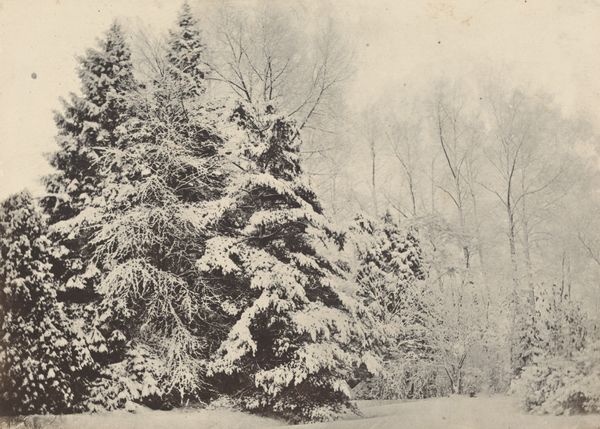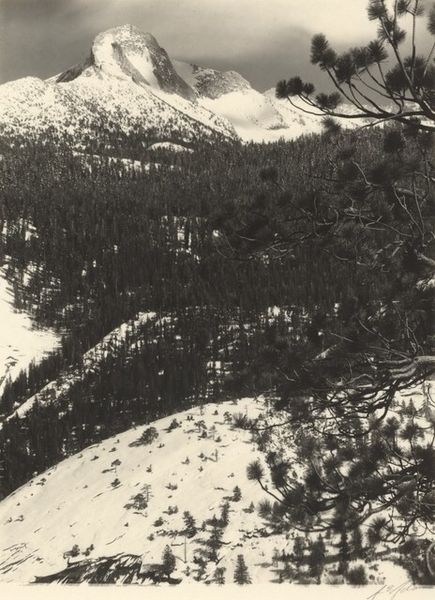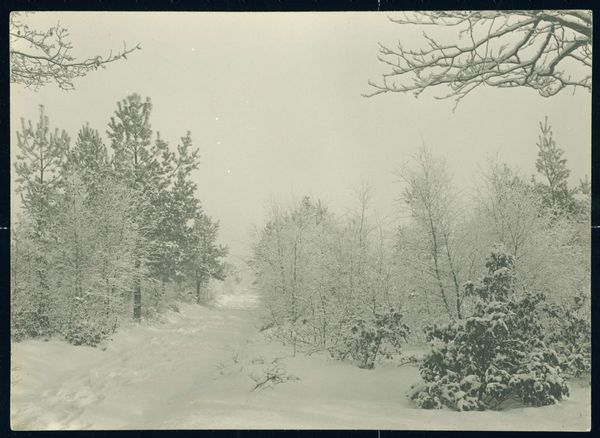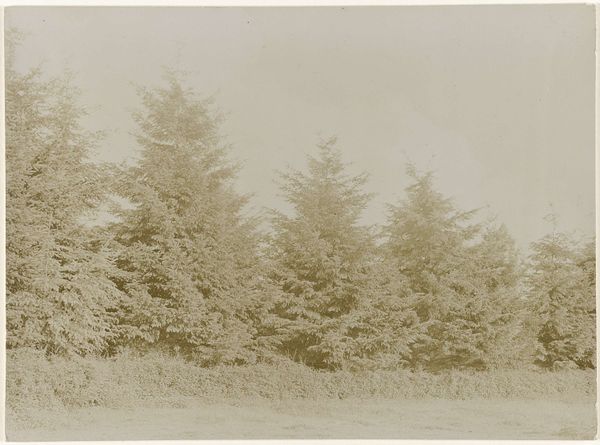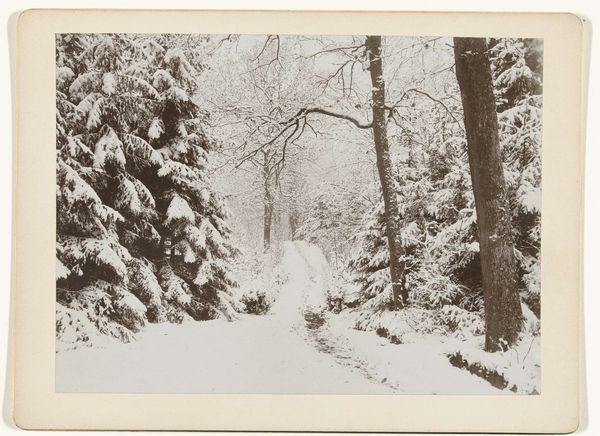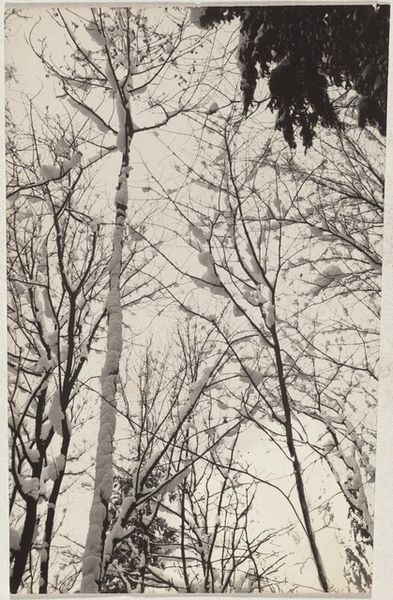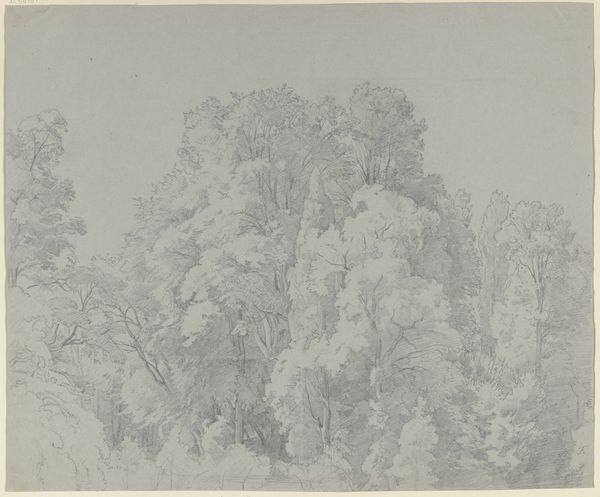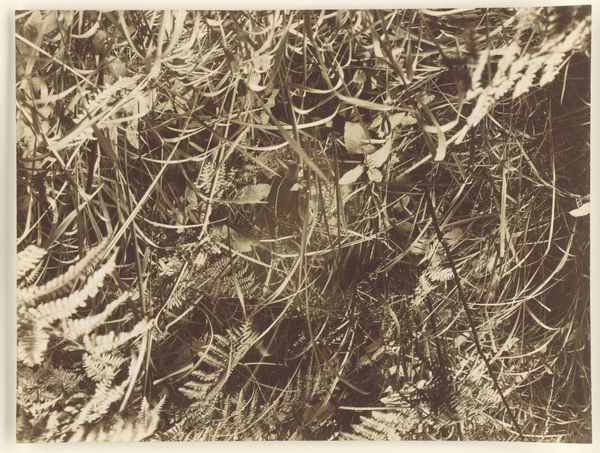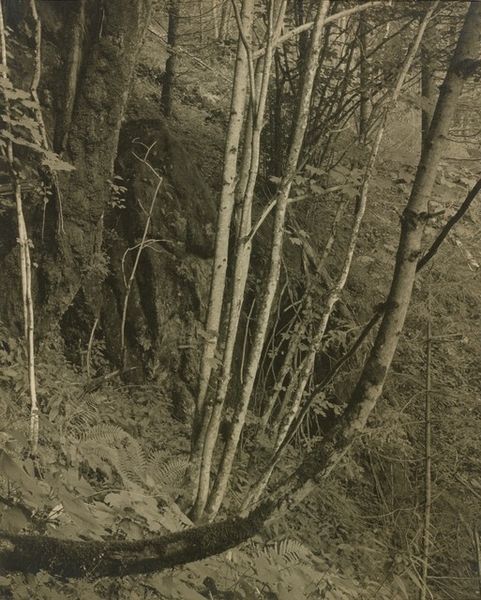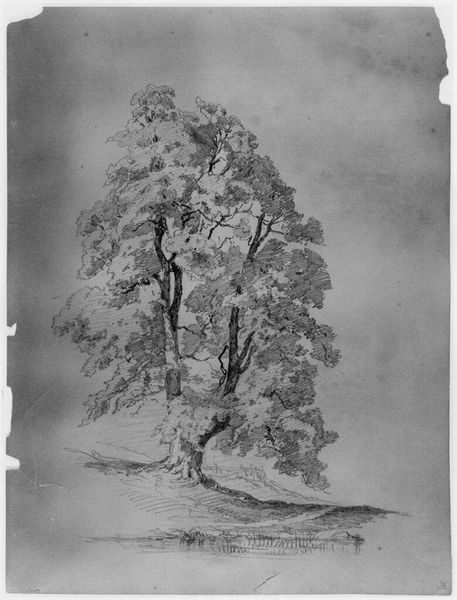
photography, gelatin-silver-print
#
landscape
#
photography
#
gelatin-silver-print
#
monochrome photography
#
naturalism
#
realism
#
monochrome
Dimensions: sheet (trimmed to image): 22.3 x 17.2 cm (8 3/4 x 6 3/4 in.)
Copyright: National Gallery of Art: CC0 1.0
Curator: Let’s turn our attention to August Sander's gelatin-silver print, "Untitled--Snow-Covered Tree," dating roughly from 1930 to 1940. A seemingly straightforward photograph. Editor: The initial impression is almost textural, isn't it? A symphony of whites, greys, and blacks created by snow-laden branches. It feels dense, almost claustrophobic, like a visual representation of winter's heavy silence. Curator: Sander, known for his typological portraits of German society, seems to approach this landscape with a similar ethos. He’s not romanticizing the scene. The image is stark, direct, stripped of sentimentality, emphasizing the tree's form and the weight of the snow. He aims to show the landscape for what it is rather than what it could mean. Editor: But there's still something evocative, right? The starkness itself speaks volumes. The monochrome intensifies the contrasts, making the snow appear almost sculpted against the dark branches. It becomes a commentary, perhaps unintentionally, on the relentless force of nature, blanketing and transforming everything in its path. In viewing this work now, post climate catastrophe, one can consider the impermanence of nature despite its enduring status as "Mother Earth". Curator: Absolutely. And consider the context – this was taken during a turbulent period in Germany's history. Sander, through his "People of the 20th Century" project, was already documenting the social and political landscape. Editor: Right, and this image offers a kind of respite from the human drama, doesn't it? Or is it? There's a kind of somber stillness that can equally be interpreted as foreboding, reflecting a collective sense of unease under a looming authoritarian regime. Can we ignore that the supposed "purity" of nature can become equally oppressive when forced through a political or ideological lens? Curator: I appreciate that point of view, thinking about how power can influence something as neutral as an image. Sander offers no explicit judgement; the photograph's inherent neutrality is what makes the reading compelling. But ultimately it's about the relationship between man and landscape, an unmediated view of a tree and its reality, in this place at this time. Editor: True. It becomes an open question, a quiet challenge to the viewer to reflect on the layers of meaning embedded in something as seemingly simple as a snow-covered tree, and on their personal lens with which they engage nature. Curator: A fitting sentiment on which to reflect after looking at Sander's powerful observation. Editor: Indeed. Let’s move on, shall we?
Comments
No comments
Be the first to comment and join the conversation on the ultimate creative platform.

